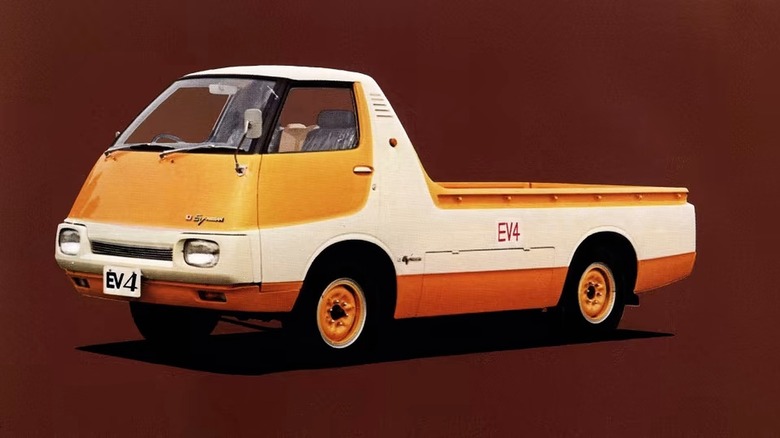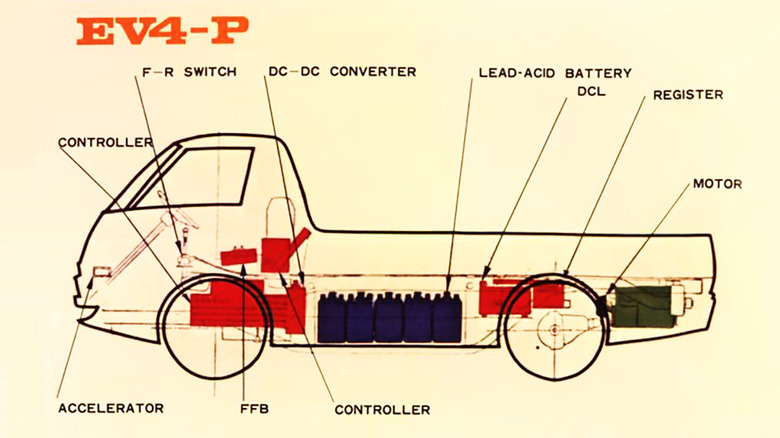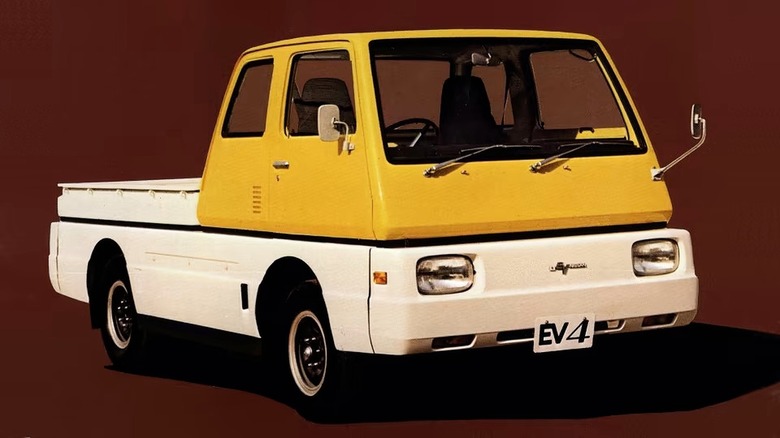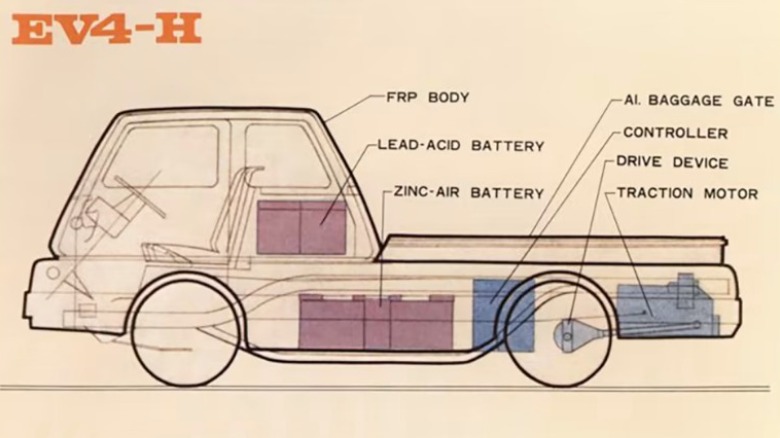How 1971's Nissan EV4 Was Way Ahead Of Its Time
Few are privy to the fact that electric cars have been around before Karl Benz patented the gasoline-powered car in 1886. French inventor Gustave Pierre Trouvé built the world's first electric car in April 1880 using a James Starley tricycle fitted with a lead-acid battery pack and a Siemens electric motor. Despite the fact that Trouvé publicly demonstrated his invention in 1881, he did not succeed in attaining a patent for the vehicle. As such, history regards English industrialist Thomas Parker as the inventor of the first production electric car in 1884, ten years before the gasoline-powered combustion car arrived in Britain.
Henry Ford introduced the Model T in 1908, and the motoring world was changed forever. Enthralled by the premise of low-cost and efficient transportation, the buying public's interest in electric cars waned by 1912, in no small part due to the cost. Ford sold the Model T for $650, while a Baker Electric Coupe started at about $2,800.
Electric vehicles made a mild comeback in the 1960s and 1970s amid the global energy crisis. As modern studies popped up to demonstrate the harmful effects of global warming and air pollution, the race to create a modern-age electric car was on. In 1971 Nissan revealed the EV4 pickup truck and abandoned the project shortly thereafter. The radical nature of this project stands in stark contrast with its swift dismissal — we simply cannot wrap our heads around the reasons Nissan abandoned this brilliant project from the offset.
Nissan EV4: An electric experiment gone right
Japanese carmaker Nissan's been dabbling in electric-powered vehicles since 1947 with the Tama electric car and the 315X electric concept in 1970. Aiming to improve upon the shortcomings of previous electric concepts while hastening the development of EVs in Japan, Nissan unveiled the EV4-P and EV4-H, which are essentially single-cab pickup trucks with a long bed, in conjunction with the Japanese Industrial Science and Technology Agency and the Ministry of International Trade and Industry.
The EV4-P has a smoother silhouette, measured almost five meters long, and had a lengthy 2.48-meter wheelbase. It had a cab-forward design reminiscent of a retro spaceship. An array of lead-acid batteries under the bed were enough to provide 187 miles (302 km) of range on a single full charge, which was impressive for an electric concept from the early '70s. This range is made all the more astounding when we consider far more modern electric cars like the 2021 Honda e, which was announced with an estimated range of 124 miles using its 35.5-kWh lithium-ion battery.
The EV4-P's batteries fed electrons to a rear-mounted 27-kW electric motor, powerful enough to propel the vehicle from zero to 24 mph in 6.9-seconds and a modest 54 mph (87 kph) top speed. Those numbers may seem unimpressive now, but the EV4-P's incredible driving range was well ahead of its time.
Nissan EV4-H: Innovative battery-hybrid system
Nissan's follow-up electric prototype, the EV4-H, took a step further in styling and technology. Abandoning the space-age design of the previous EV4-P in exchange for a more conventional truck-based styling, the EV4-H featured a "hybrid" battery system that delivered more power and range using high-density zinc-air and lead-acid battery packs.
Nissan claimed its dual-battery hybrid control system offered 78% efficiency and up to 308 miles (496 km) of driving range. Lead-acid batteries were installed behind the cabin, while a zinc-air battery pack rested neatly between the front and rear wheels. Nissan incorporated a regenerative braking system in the rear wheels to drip-charge the batteries when braking or coasting. Batteries in the EV4-H could be removed or serviced using an innovative system of sliding trays.
The higher range of the EV4-H is only part of what makes the vehicle great. It accelerates from zero to 40 mph in 4.9-seconds and has a top speed of 56 mph (90 kph) while having a 2,204 pound (1000 kg) payload to carry heavier stuff.
Unfortunately, neither the EV4-P nor the EV4-H ever made it to production. They did make a valiant attempt at proving electric power would be a viable alternative to fossil fuel — if only as a pair of promising visions of the distant future.



